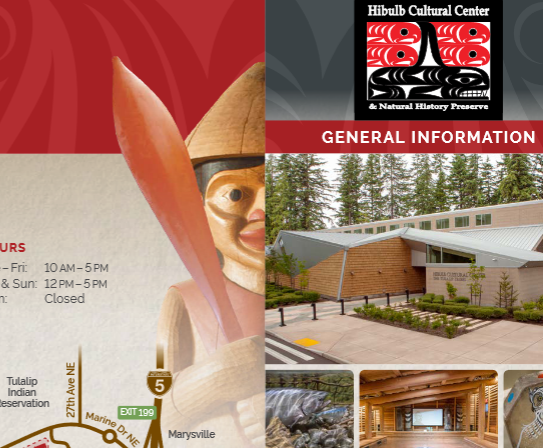

Our program on Friday, February 26th was three short videos on the history of the Tulalip Tribe. Each covered a different portion of their history. These well produced videos are historical and tell the history, culture and current day activities of the Tulalip Tribes. The Hibulb Cultural Center & Museum and gift shop is something that everyone should visit and learn more about the history and culture of the Tulalip Tribes and their economic strength in Snohomish County. President Ken spoke about the importance of the Hibulb Cultural Center and which he said is a real treat, especially the room that describes the early Native American education.
The first video was a narrated by J.D. Mowrer, Associate producer, Hibulb Cultural Center and National History Preserve. The video begins with a view of the Cultural Center interior and wonderful exhibits and carvings. The video talks about the Salish Sea and surrounding lands. Watching carvers begin their carving and how dedicated these wonderful craftsman were that has been part of their heritage since the beginning and throughout their history. From the early discovery by Captain George Vancouver with additional input by Lt. Peter Puget outlining what they were seeing as the Native Americans were living in huts on Tulalip Bay. These were likely the first vessels seen by the Native American inhabitants.
The second video regarded the Summer Camp House was narrated by Mytyl Hernandez, Marketing Public Relations at the Hibulb Cultural Center and National History Preserve. The Summer Camp House was used during the summer where they would gather food. They would fish for salmon and crab as well as digging for clams when the tide was low. These were their sources of food. They would follow the salmon runs but only take what was needed. She talked about how the camps were built.
The third video is about the name of Tulalip Bay. Narrator was Teri Gobin, Chairwoman of the Tulalip Tribes. Time in memorial was best described as how long the Tulalip tribes have inherited their lands. Fish and crabs were a source of income as well as being stored for eating in the winter. Point Elliott treaty was signed in 1855 with Governor Edward Stevenson in what is now Mukilteo. In 1934, the US Congress enacted the Indian Reorganization Act. The Chairwoman talked about the start of their economic development that started by selling cigarettes, then going to bingo and on to the development of the casinos and the Seattle Premium Outlet Mall and so much more.
All three of these videos were so well done and extremely informative.